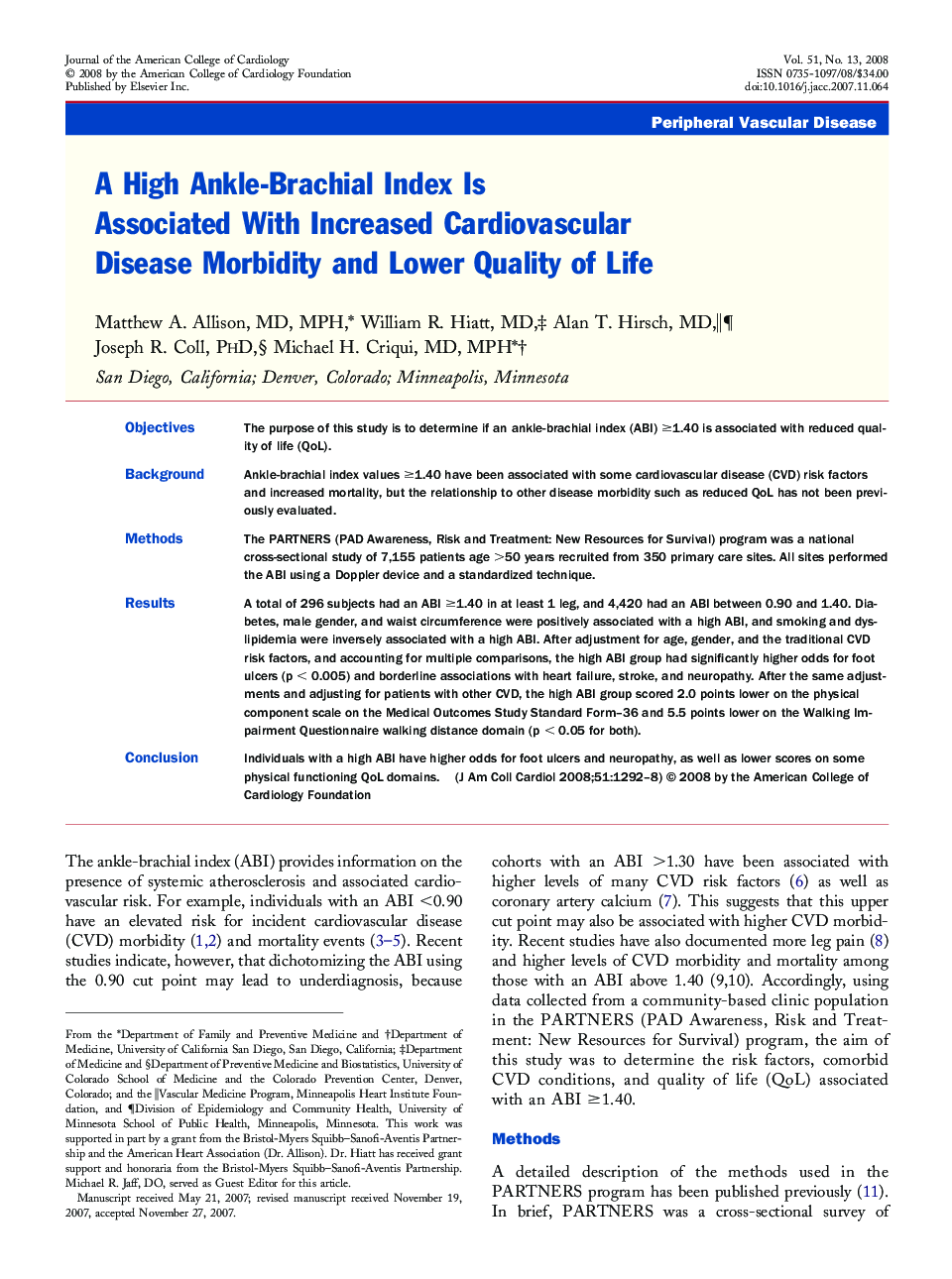| Article ID | Journal | Published Year | Pages | File Type |
|---|---|---|---|---|
| 2953916 | Journal of the American College of Cardiology | 2008 | 7 Pages |
ObjectivesThe purpose of this study is to determine if an ankle-brachial index (ABI) ≥1.40 is associated with reduced quality of life (QoL).BackgroundAnkle-brachial index values ≥1.40 have been associated with some cardiovascular disease (CVD) risk factors and increased mortality, but the relationship to other disease morbidity such as reduced QoL has not been previously evaluated.MethodsThe PARTNERS (PAD Awareness, Risk and Treatment: New Resources for Survival) program was a national cross-sectional study of 7,155 patients age >50 years recruited from 350 primary care sites. All sites performed the ABI using a Doppler device and a standardized technique.ResultsA total of 296 subjects had an ABI ≥1.40 in at least 1 leg, and 4,420 had an ABI between 0.90 and 1.40. Diabetes, male gender, and waist circumference were positively associated with a high ABI, and smoking and dyslipidemia were inversely associated with a high ABI. After adjustment for age, gender, and the traditional CVD risk factors, and accounting for multiple comparisons, the high ABI group had significantly higher odds for foot ulcers (p < 0.005) and borderline associations with heart failure, stroke, and neuropathy. After the same adjustments and adjusting for patients with other CVD, the high ABI group scored 2.0 points lower on the physical component scale on the Medical Outcomes Study Standard Form–36 and 5.5 points lower on the Walking Impairment Questionnaire walking distance domain (p < 0.05 for both).ConclusionIndividuals with a high ABI have higher odds for foot ulcers and neuropathy, as well as lower scores on some physical functioning QoL domains.
